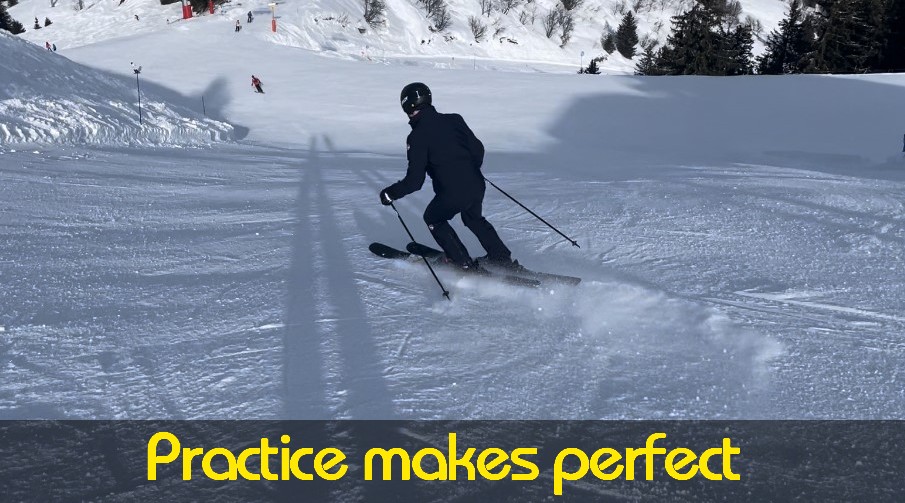Practice makes perfect
Make the best use of your ski time and avoid some common mistakes.
SKILL - the ability to do something well, dexterity or coordination especially in the execution of learned physical tasks.
To improve your skiing, we are firm believers that your time on snow should be divided between ski lessons and practice time, but how, where, when and why should you practice?
Everyone progresses at different rates but we usually see faster ‘skill acquisition’ as a result of focused practice time. This should be fun ski time but beware of some potential pitfalls and common mistakes…
Skiing with your mates or loved ones
Probably the most common reason why your skiing doesn’t improve. Don’t get us wrong, we want you to enjoy your shared holiday time, but it’s almost guaranteed they’ll want to ski you on slopes which are too challenging or inappropriate for trying to hard-wire your new skills.
Listening to your mates or loved ones
Practicing should be all about repetition of the techniques and sensations you’ve learned during your lesson. These sessions should be mindful but without over-thinking. Friends and family may try to ‘teach’ you (often to try and coax you down too steep a slope) which results in a brain overloaded with confused or conflicting information.
Over thinking it
Once you’ve built a ‘feel’ for what you need to practice, try to just go with the flow and allow your muscles to become programmed (muscle memory). This takes time but overthinking can dramatically slow down the process. Building new skills is a process of repetition and making mistakes, so try not to be too hard on yourself if it doesn’t always feel right.
Over training
Try not to exhaust yourself either mentally or physically, as this will have a detrimental effect on how you ski the following few days. It’s more about ‘quality’ rather than ‘quantity’ when it comes to practicing.
Under training
It should probably be obvious but it will be difficult to build your skiing skills by not doing any practice or just doing one run and heading to the bar. We do however realize that some people aren’t confident enough to go and ski by themselves, so we try to help you overcome those hurdles.
Here’s an example of a typical situation we regularly encounter as instructors...
The instructor has started to teach you how to make plough-parallel turns (where your skis are starting to match parallel towards then end of each turn) on an easy blue run. You’ve made good progress during the ski lesson but you’re still needing to concentrate otherwise you default back to snowplough turns. After the lesson your mates encourage you to ski a “great run they know’’ which turns out to be a steep blue (or a red!). You are frightened of the steepness and end up defaulting to a wide defensive snowplough, which is something you’ve started to move beyond in your lesson.
New skills need to be given time to embed and become hard-wired which can only be achieved by repetition in a stress-free environment and at your pace. Your instructor should be able to advise you on the best slopes to practice. Generally, these will be the same or similar slopes as you used in your ski lesson.
…PERFECT PRACTICE MAKES PERFECT…
All articles
most recent
AlpinExpress Pass
Practice makes perfect
2025-26 Les Gets lift opening dates and times
Learning to ski in Les Gets
How do I choose the best ski school in Les Gets?
Are ski lessons worth it?
Skiing with Children - 6 handy hints
3 P's to help improve your ski performance
9 ways to avoid uncomfortable ski boots
How to get the most from your ski lessons
categories
Ski holiday planning (11)
Top tips (9)
Les Gets (7)
Staying safe (6)
Environment (4)
Latest news (3)